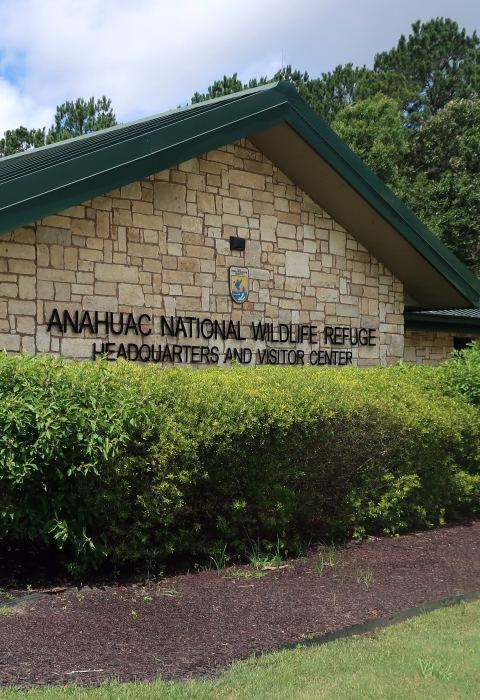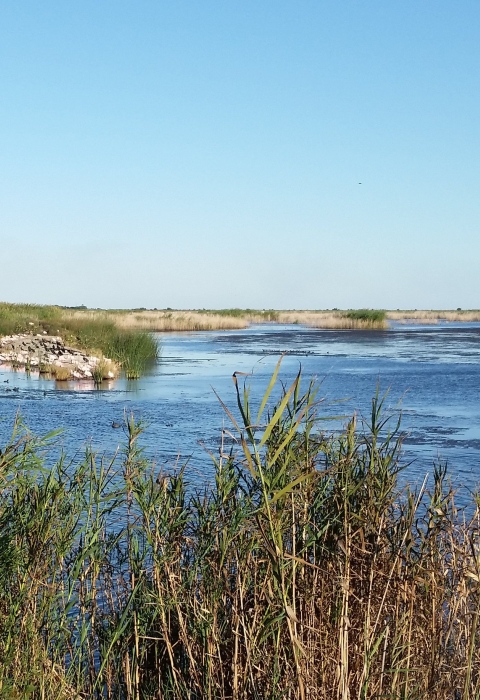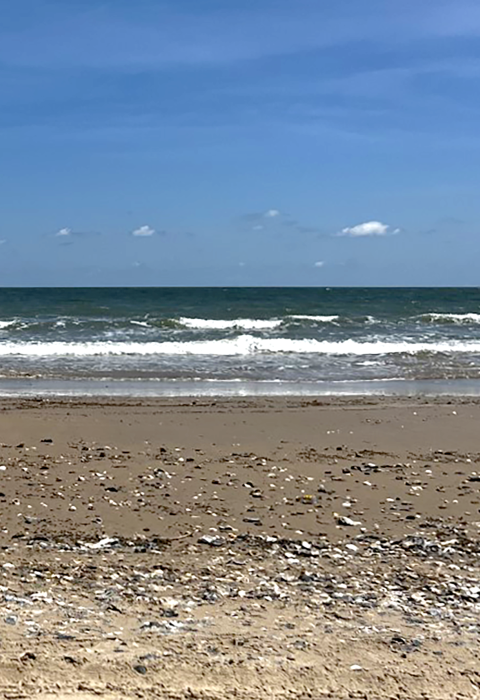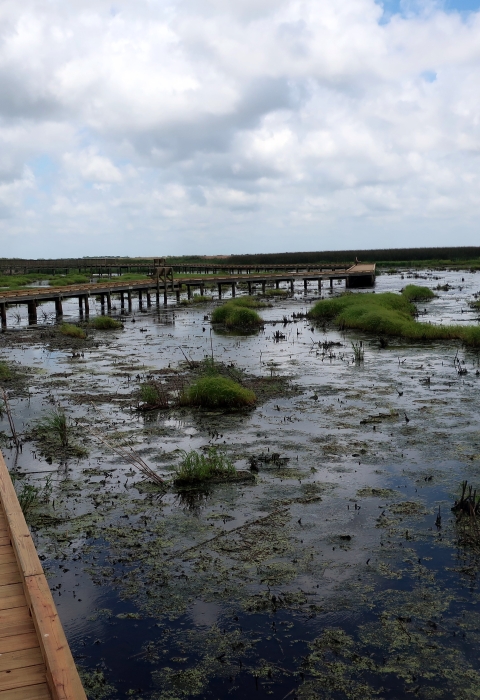About Us
Anahuac National Wildlife Refuge was established in 1963 to provide wintering and migration habitat for ducks and geese. We protect the coastal marsh for migratory and resident waterfowl, shorebirds, and waterbirds. The refuge is one of three refuges in the Texas Chenier Plain Wildlife Refuge Complex, and one of a string of wildlife refuges situated on the Gulf of Mexico. We are a designated Globally Important Bird Area, Monarch Waystation, and a Western Hemisphere Shorebird Reserve Network Site of International Importance. The 37,000-acre refuge is located on the Texas Gulf Coast just outside the Houston, Texas metropolitan area.
Our Mission
The mission of the National Wildlife Refuge System is to administer a national network of lands and waters for the conservation, management and, where appropriate, restoration of the fish, wildlife and plant resources and their habitats within the United States for the benefit of present and future generations of Americans.
Our Purpose
Every national wildlife refuge national wildlife refuge
A national wildlife refuge is typically a contiguous area of land and water managed by the U.S. Fish and Wildlife Service for the conservation and, where appropriate, restoration of fish, wildlife and plant resources and their habitats for the benefit of present and future generations of Americans.
Learn more about national wildlife refuge was created for a special purpose. Some were created to protect migratory birds, others to protect threatened or endangered species or unique habitats, while others fulfill another special purpose. Refuges are special places where wildlife comes first. All activities allowed on refuges must be evaluated to make sure each activity will not conflict with the reason the refuge was founded.
At Anahuac National Wildlife Refuge, our mission is to protect critically important coastal wetlands so they can continue to benefit people, wildlife, and the economy for generations to come.
Our History
Feb. 27, 1963 – The refuge is established by Congress to provide wintering and migration habitat for ducks, geese, and other migratory birds of the Central Flyway.
1966 – A group of volunteers at Anahuac National Wildlife Refuge create the Friends of Anahuac Refuge.
1982 – The refuge doubles in size after the addition of the Barrow Ranch (now called the East Unit). The refuge now encompasses 14,670 acres.
1989-1996 - The refuge adds multiple unique coastal habitat tracts through purchase and donation.
2008 – Hurricane Ike hits the Gulf Coast and floods the refuge with 17-feet of saltwater surge, destroying all facilities and public use areas.
May 12, 2011 - A new Visitor’s Center and Headquarters are opened to the public. The new LEED Certified buildings now serve up to 5.7 million people in the Houston-Sugarland-Baytown metropolitan area and the Texas Gulf Coast.
February 20, 2013 - Winnie Depot community facility is completed. The Winnie Depot is closed to the public, but is designed to serve as a command center in the event of a regional emergency.



